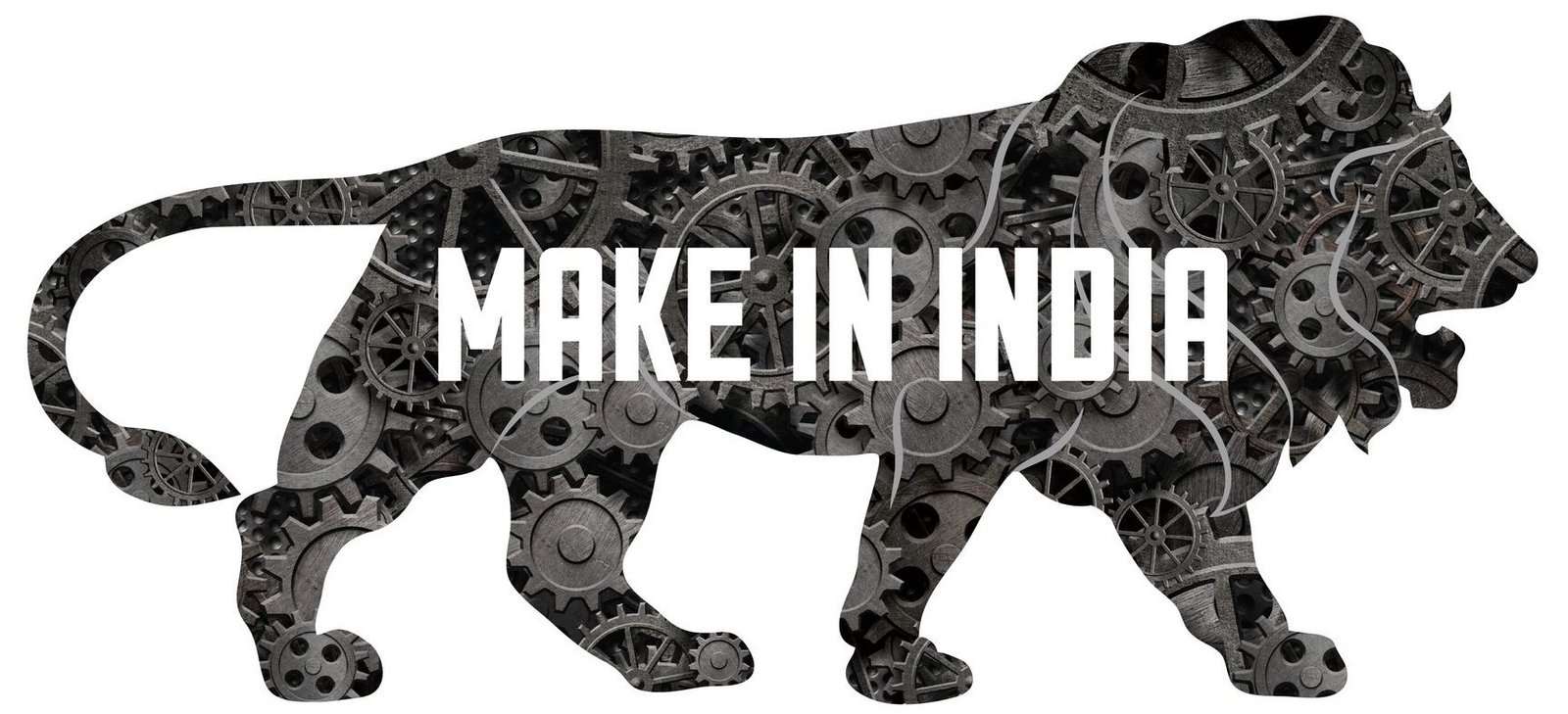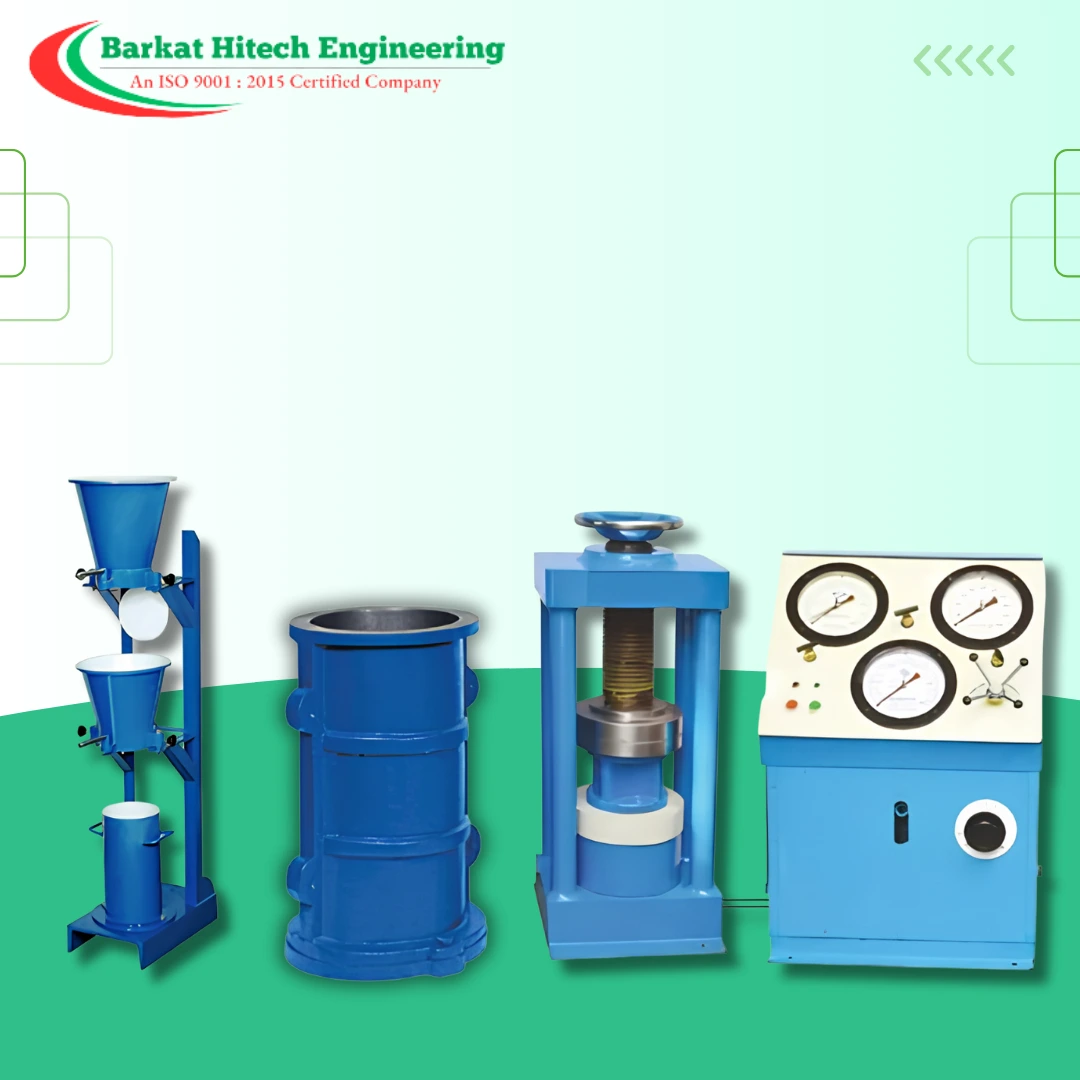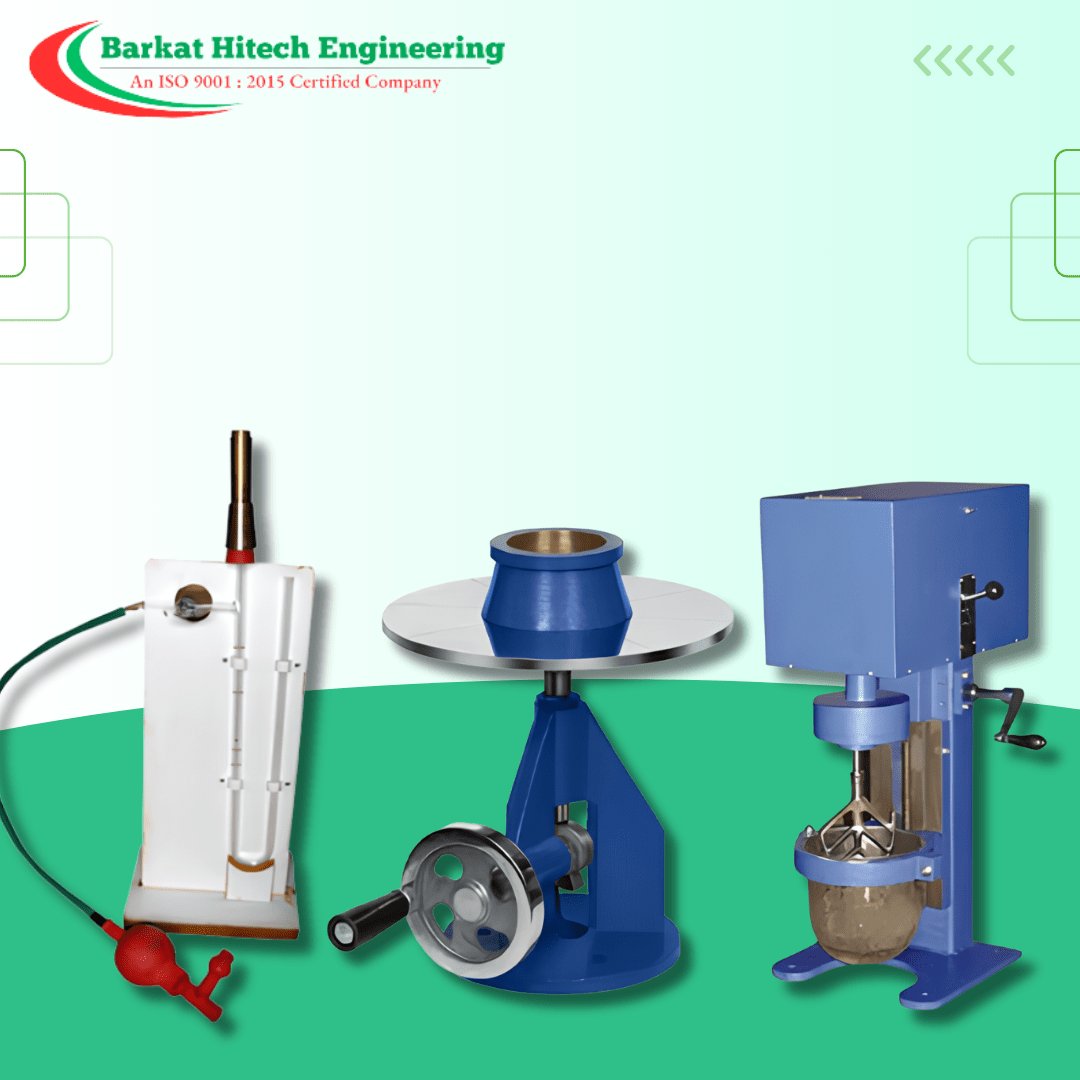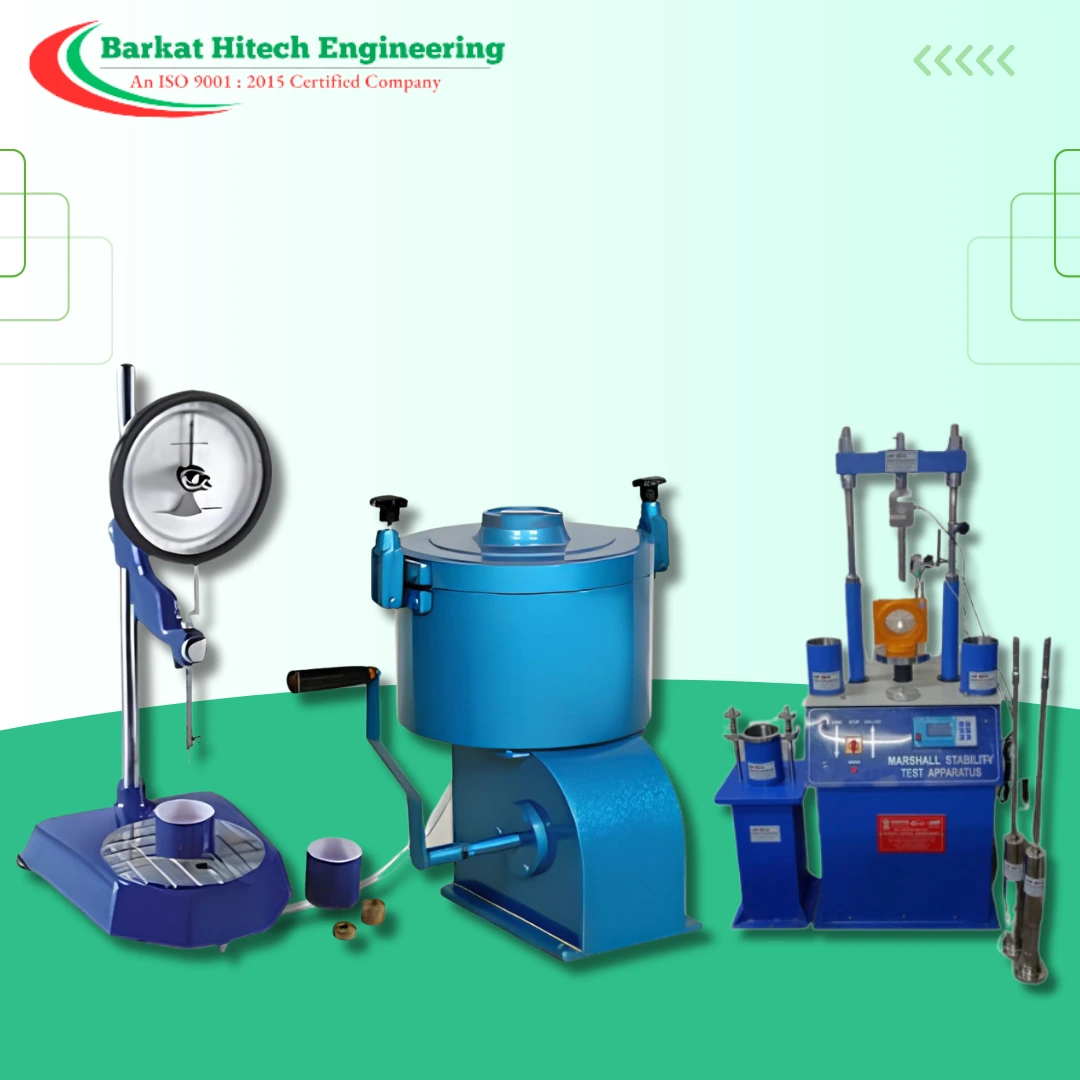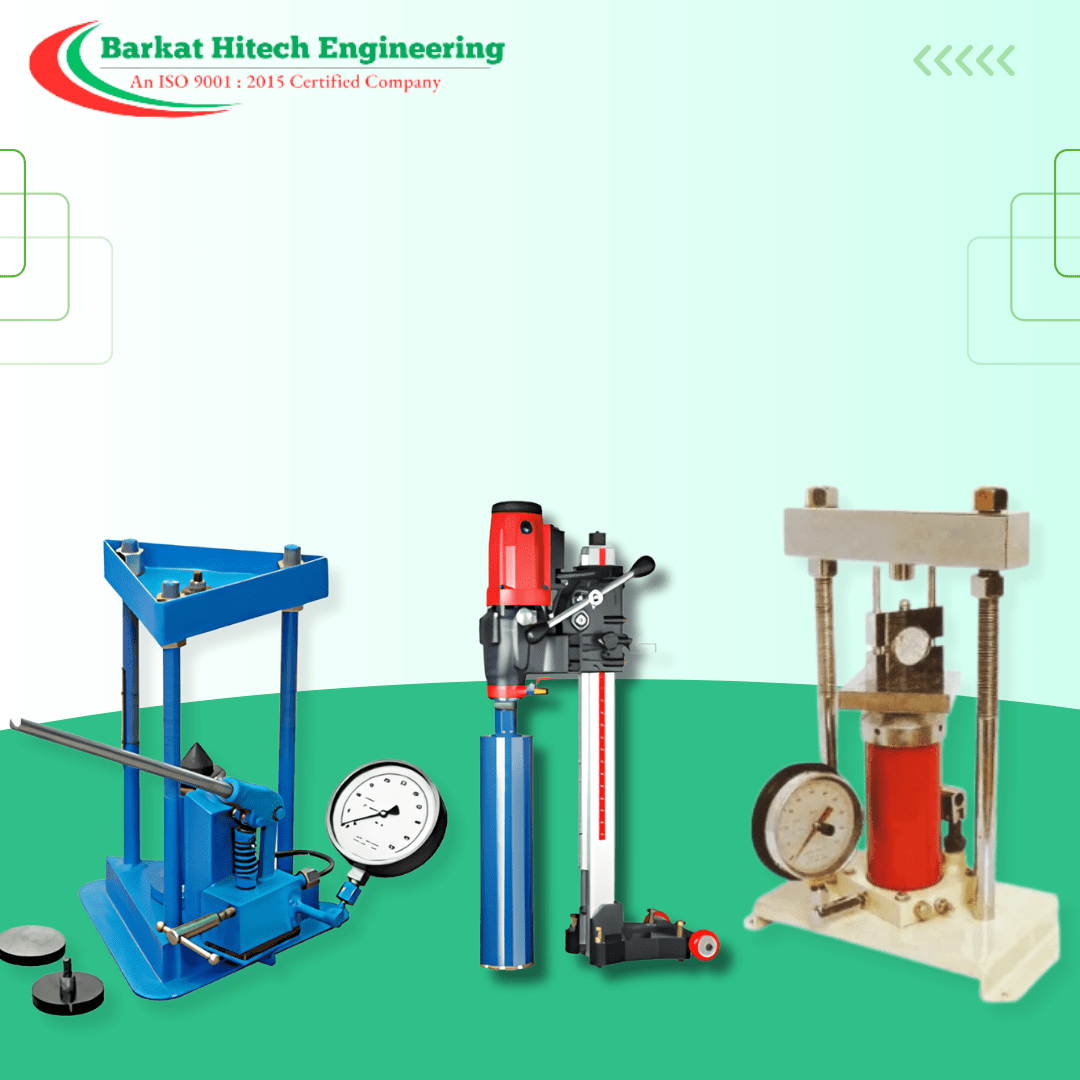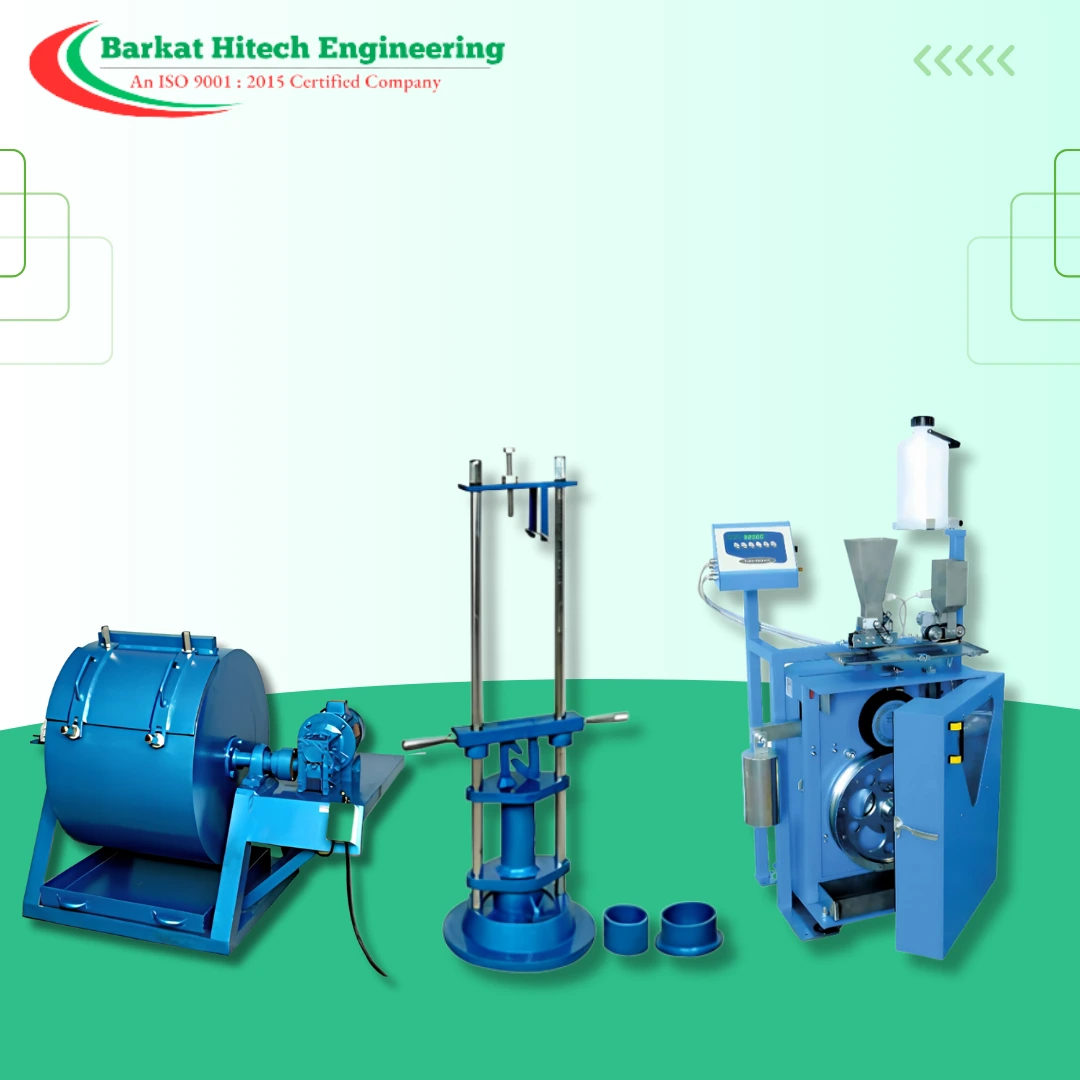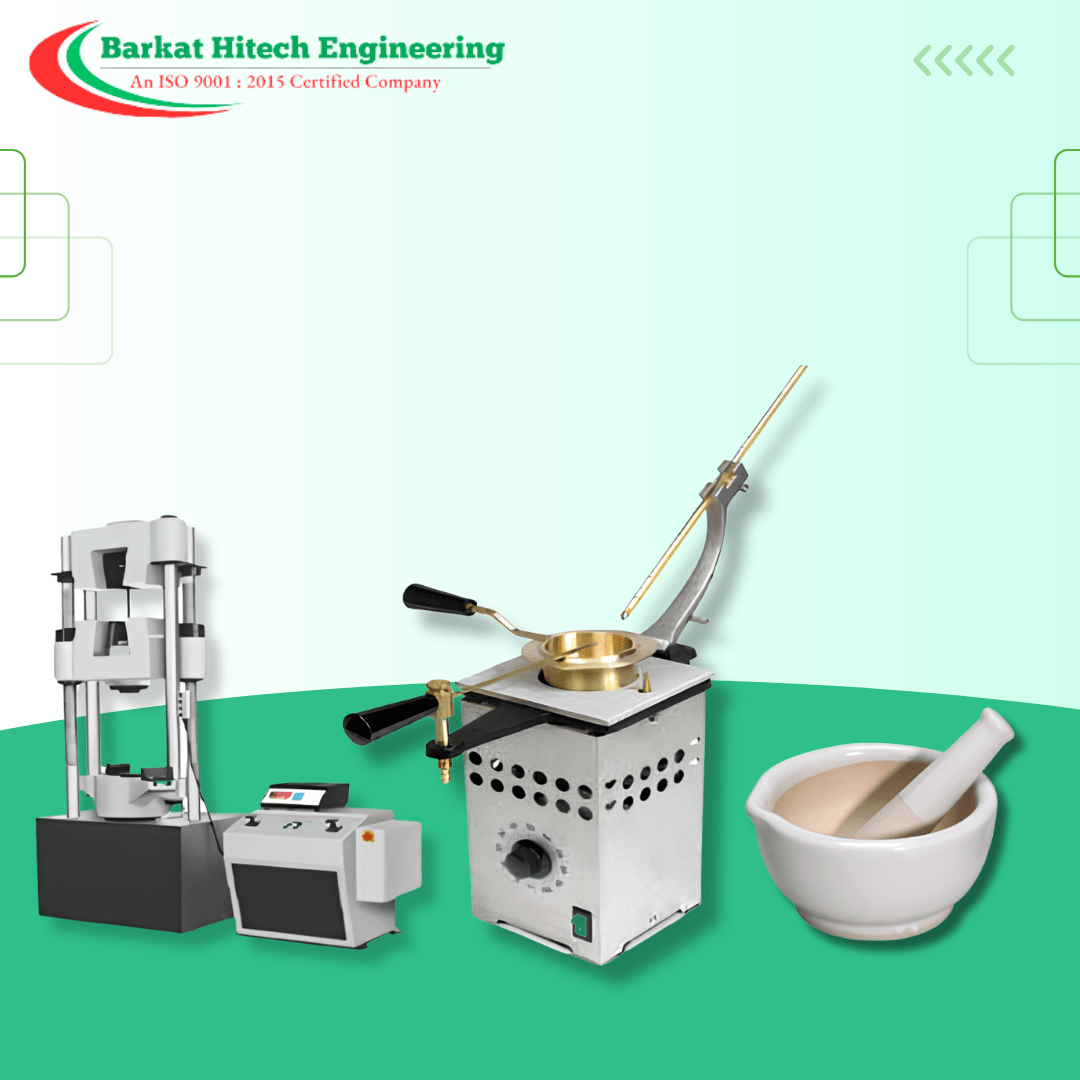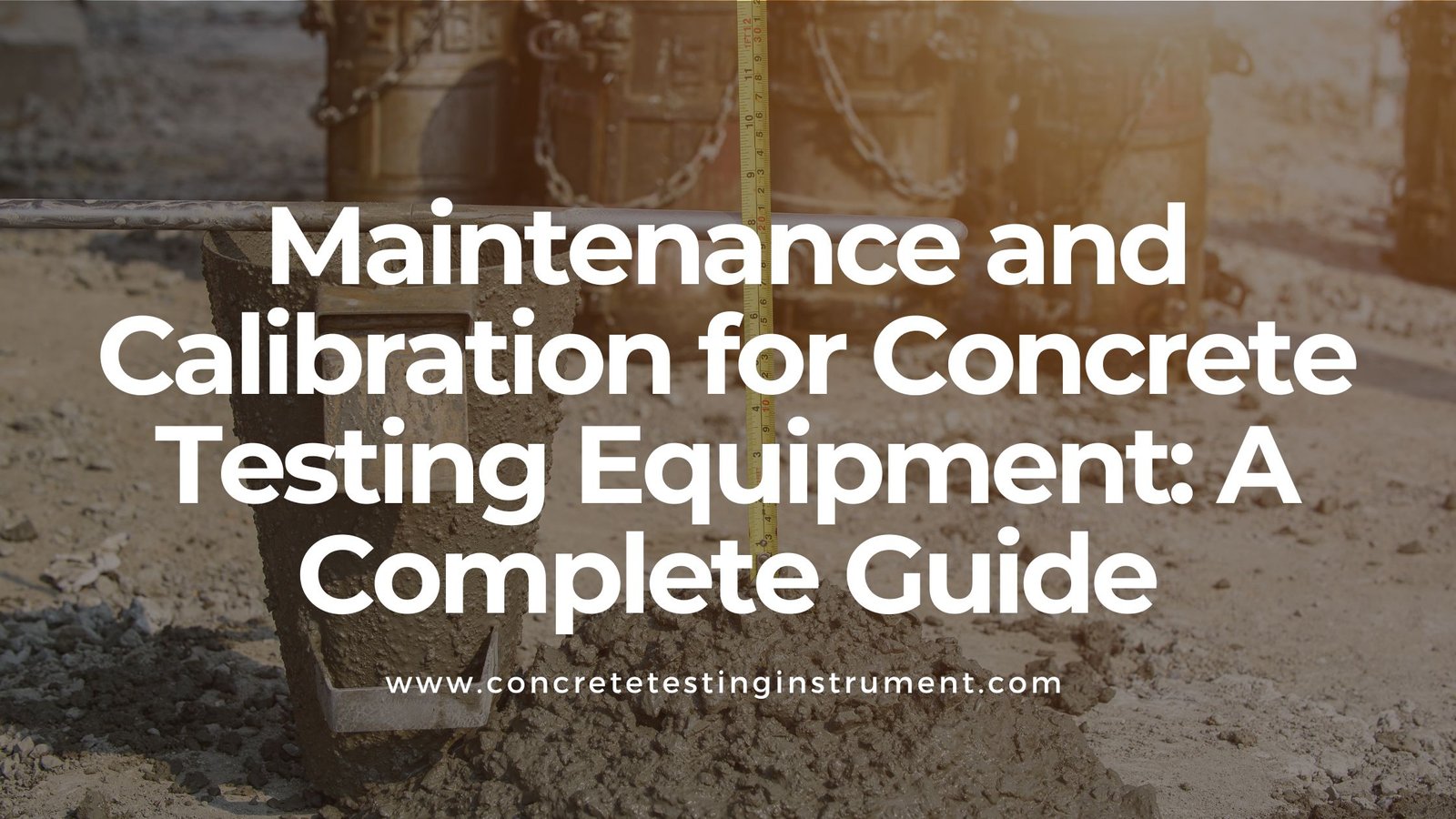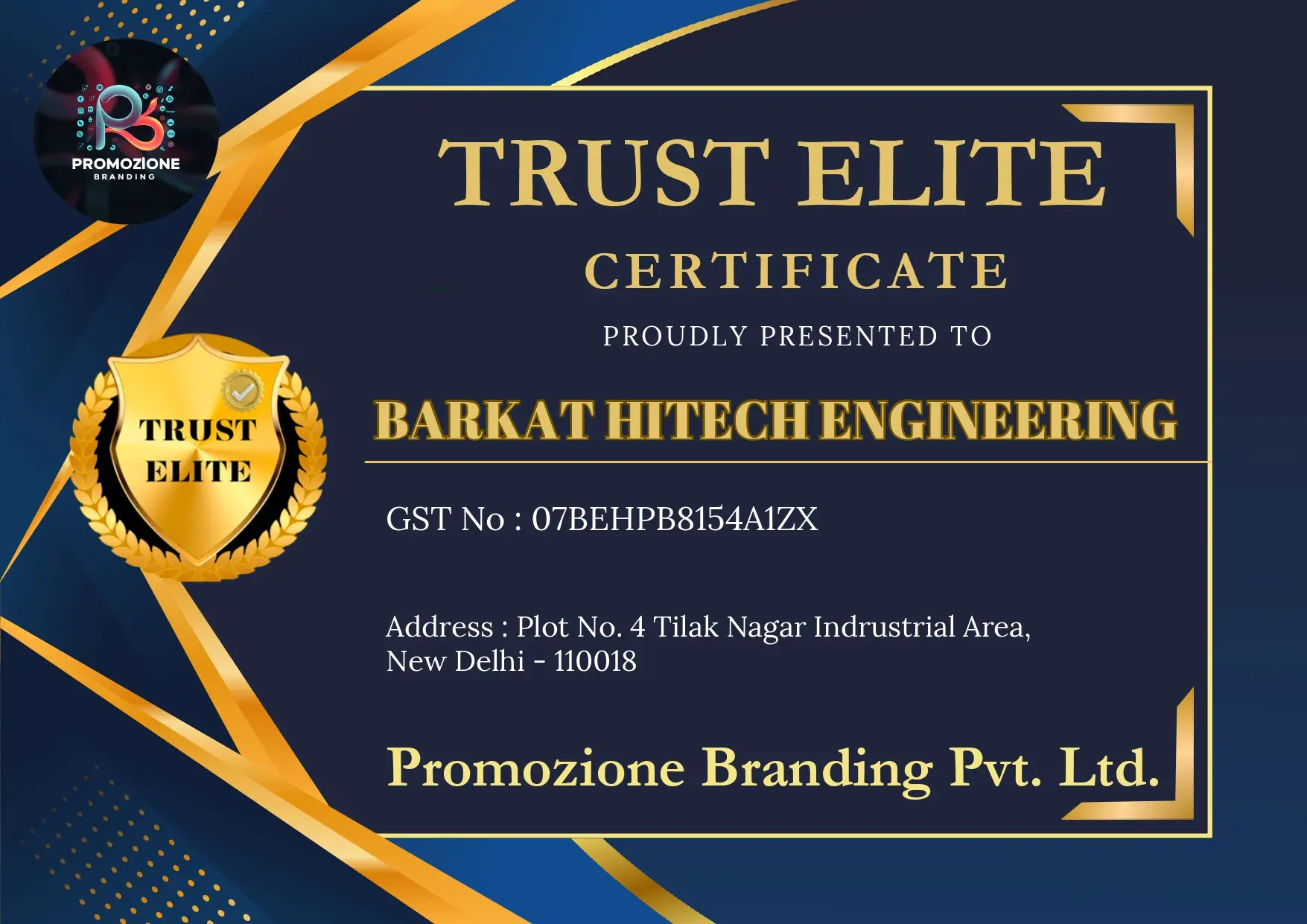Introduction
In modern construction and civil engineering, the quality and strength of concrete determine the safety and durability of every structure — from bridges and skyscrapers to pavements and dams. Ensuring that this concrete meets precise engineering standards requires reliable testing equipment. However, even the most advanced instruments lose accuracy over time if not properly maintained or calibrated.
Maintenance and calibration are not optional technical steps — they are vital for guaranteeing the integrity of every test result. An uncalibrated or poorly maintained compression testing machine, for instance, can produce inaccurate readings that lead to faulty conclusions about a concrete mix’s strength. Such errors can have costly or even dangerous consequences in large-scale construction projects.
As a leading concrete testing equipment manufacturer, Barkat Hitech Engineering emphasizes that consistent care, precise calibration, and professional oversight form the foundation of dependable concrete testing. This article explores the importance of these practices, the right methods to follow, and how modern innovations are reshaping maintenance in the testing industry.
Understanding the Role of Concrete Testing Equipment
Concrete testing equipment is used to evaluate properties like compressive strength, workability, durability, and consistency. These instruments ensure that concrete produced on-site or in a lab adheres to specific standards such as IS, ASTM, or BS codes. Common tools include compression testing machines, slump cones, curing tanks, flexural testing devices, and sieves for aggregate analysis.
Every piece of equipment serves a specific function — and any misalignment, wear, or malfunction can distort the results. A slightly worn platen in a compression testing machine may cause uneven pressure distribution, while an unclean sieve could block fine aggregates, changing the apparent gradation of materials. The outcome is simple but serious: unreliable data that compromises the entire testing process.
That’s why every equipment owner or lab technician must view maintenance and calibration as an ongoing responsibility — not just an occasional task performed before an audit or inspection.
Why Maintenance and Calibration Are Essential
Concrete testing equipment operates under heavy loads, in dusty environments, and often with exposure to moisture, cement, and aggregates. These working conditions make regular maintenance a critical aspect of ensuring accuracy. Routine cleaning, lubrication, and inspection prevent deterioration, corrosion, and sensor errors.
Calibration, on the other hand, ensures the accuracy and reliability of the measurements. It is the process of comparing the performance of an instrument with a standard reference and adjusting it if deviations are found. Over time, wear, vibration, and temperature changes can cause even the best instruments to drift from their original calibration.
Without periodic calibration, test results lose their credibility. In civil engineering, even a one percent error in compressive strength measurement can alter mix design proportions, which may weaken an entire structure. Regular calibration ensures that test readings stay within acceptable limits and comply with international standards.
Barkat Hitech Engineering advises laboratories to calibrate critical instruments like compression testing machines, flexural testing devices, and load cells at least once a year through certified bodies to ensure traceability and reliability.
Maintenance of Key Concrete Testing Instruments
Each testing instrument has its own set of maintenance requirements based on how it operates and what it measures. The compression testing machine, for instance, needs careful attention to its hydraulic system and load platens. Dirt or cement dust accumulating between the platens can lead to uneven load application, while low oil levels in the hydraulic unit can cause pressure fluctuations.
The slump test apparatus, which determines the workability of fresh concrete, must remain clean and free from rust. Even a minor dent in the slump cone can distort the test outcome. Similarly, flexural and tensile testing machines require periodic inspection of their loading frames and digital sensors to ensure they deliver accurate readings.
Concrete sieves and aggregate analysis tools demand particular care. A blocked or torn mesh alters particle distribution data, misleading engineers during mix design. After each use, sieves should be thoroughly cleaned and checked for wear. Curing tanks, meanwhile, must maintain stable water temperature and cleanliness, as algae growth or scale deposits can affect specimen curing conditions.
Routine maintenance, when performed diligently, significantly extends the lifespan of these instruments. Barkat Hitech Engineering recommends implementing structured maintenance schedules, including daily cleaning, weekly inspections, and monthly system checks.
Developing a Preventive Maintenance Plan
A preventive maintenance plan is the backbone of a reliable testing operation. It focuses on identifying issues before they lead to failure. Daily maintenance usually involves cleaning surfaces, removing debris, and lubricating moving parts. Weekly inspections check for alignment issues, hydraulic leaks, or electrical irregularities. Monthly maintenance should include functional testing, tightening of bolts, and checking of calibration labels to ensure they’re still valid.
An annual overhaul is equally essential. During this process, laboratories should schedule professional servicing from either the manufacturer or a certified technician. This may include replacing worn seals, recalibrating sensors, and testing hydraulic and electronic systems for stability. Preventive maintenance not only reduces repair costs but also minimizes downtime, keeping laboratories fully operational.
Calibration: The Heart of Accuracy
Calibration ensures that testing equipment provides measurements consistent with established standards. It’s a scientific process that verifies the reliability of results and ensures compliance with industry norms.
Take, for example, a compression testing machine. Calibration involves placing a reference load cell or proving ring within the testing frame and applying incremental loads. The readings from the machine are compared to those of the reference standard, and any deviation is corrected or recorded. This ensures that future readings accurately reflect the true compressive strength of the tested concrete specimens.
Different instruments have distinct calibration requirements. Slump cones must be checked for dimensional accuracy, flexural testing machines require verification of load distribution, and sieves must be measured for mesh consistency. Calibration frequency depends on usage intensity, environmental factors, and industry regulations. Typically, heavily used machines require calibration every six months, while less-used ones can follow annual schedules.
Barkat Hitech Engineering not only manufactures high-precision testing equipment but also provides professional guidance and calibration support to ensure continued accuracy throughout the product’s lifespan.
Challenges and Troubleshooting
Even with regular maintenance, concrete testing equipment can experience performance issues. The most common problem is inconsistent readings, which may arise from calibration drift or mechanical misalignment. Operators should verify calibration certificates and ensure the machine has not exceeded its service interval.
Hydraulic machines may suffer from pressure fluctuations due to air in the system or deteriorated seals. Electrical issues, such as faulty wiring or unstable power supply, can cause digital load indicators to display erratic values. In all such cases, timely inspection and professional intervention prevent small issues from turning into costly failures.
Another common issue is environmental interference. Excessive humidity, dust, or vibration in the testing area can affect instrument performance. Maintaining a clean, controlled environment and using protective covers can minimize such risks.
Safety and Compliance Considerations
Safety in testing laboratories goes hand in hand with maintenance. Poorly maintained machines can pose risks — a cracked platen in a compression testing machine, for example, can lead to sudden load release. Therefore, safety checks should be part of every maintenance routine. Operators must always wear protective gear, disconnect electrical supplies before servicing, and ensure machines are properly grounded.
Compliance is equally crucial. Most laboratories are required to follow standards such as IS 516, ASTM C39, or BS EN 12390, which mandate specific calibration and maintenance intervals. Maintaining calibration certificates and service records not only ensures compliance but also builds confidence during third-party audits and client inspections.
The Role of a Reliable Manufacturer
Choosing the right manufacturer plays a major role in ensuring the long-term performance of testing equipment. Barkat Hitech Engineering, a renowned concrete testing equipment manufacturer, provides more than just machines — it offers complete lifecycle support, from installation and training to maintenance and calibration assistance.
Each piece of equipment produced by Barkat Hitech Engineering is designed with durability, precision, and ease of maintenance in mind. Their products comply with international standards, ensuring reliability in both laboratory and field testing environments. Furthermore, their technical team provides personalized maintenance schedules and detailed operating manuals to help clients maintain their equipment in peak condition.
With decades of experience serving construction firms, research labs, and educational institutions, Barkat Hitech Engineering has built a reputation for reliability and excellence. Their after-sales service and calibration support help laboratories meet ISO and NABL accreditation requirements with confidence.
Modern Trends in Concrete Testing Maintenance
The field of concrete testing is rapidly evolving. Automation and digitalization have significantly improved the way laboratories maintain and calibrate equipment. Many modern compression testing machines now feature digital controllers that can automatically log test results, monitor performance, and alert operators when calibration is due.
The integration of IoT (Internet of Things) technology is another major advancement. Smart equipment now transmits performance data to cloud platforms, allowing remote diagnostics and predictive maintenance. This minimizes unexpected downtime and ensures that calibration schedules are never missed.
Sustainability is also becoming an important factor. Manufacturers like Barkat Hitech Engineering are incorporating energy-efficient designs and eco-friendly materials in their production processes. The goal is not only precision but also environmental responsibility.
Long-Term Benefits of Proper Maintenance and Calibration
The benefits of following a disciplined maintenance and calibration routine go far beyond accuracy. Consistent care extends equipment lifespan, reduces repair costs, and improves operational efficiency. Properly calibrated machines eliminate the need for retesting, saving both time and materials.
In the broader sense, reliable testing ensures the structural integrity of buildings and infrastructure, protecting human lives and reducing long-term repair or liability costs. Moreover, compliance with calibration standards strengthens the reputation of a laboratory or construction company, assuring clients and regulatory bodies of their commitment to quality and safety.
For a company like Barkat Hitech Engineering, which has always championed precision and reliability, these principles are at the heart of every machine they design and deliver.
Conclusion
Maintenance and calibration are not merely technical checkboxes — they are the foundation of trust in concrete testing. Every test result used in design or construction decisions relies on the accuracy of the instruments that produce it. A disciplined approach to care, regular calibration, and adherence to international standards safeguard both equipment performance and project safety.
Barkat Hitech Engineering, as a leading concrete testing equipment manufacturer, stands as a trusted partner for laboratories and construction companies seeking dependable performance, longevity, and compliance. By combining precision engineering with expert after-sales support, Barkat ensures that your equipment remains accurate, efficient, and ready for the demands of modern construction testing.
In an industry where every measurement matters, choosing the right manufacturer and maintaining your equipment meticulously is not just good practice — it’s essential for building a safer, stronger world.

